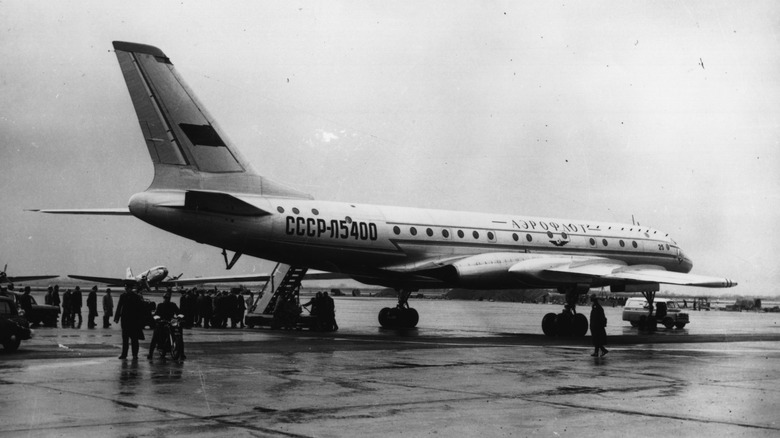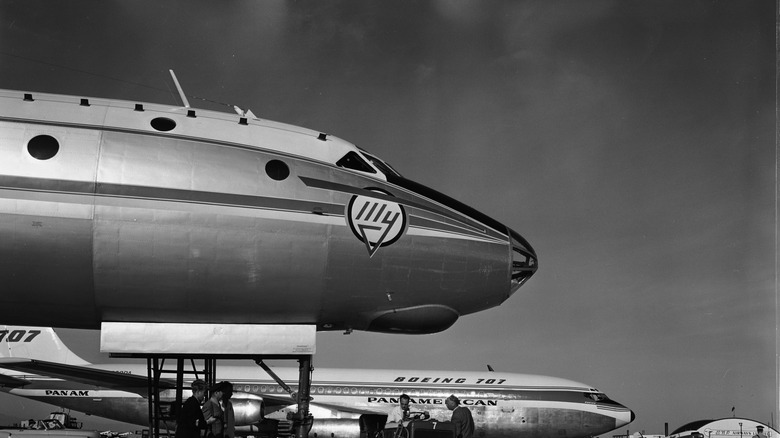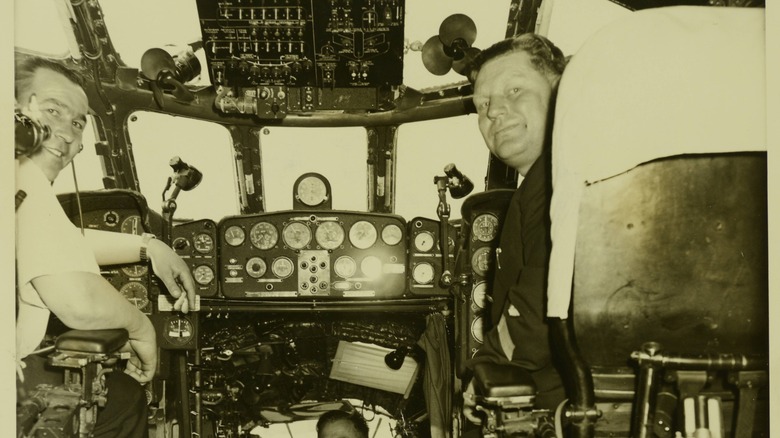This Jet-Powered Soviet Airliner Had A Unique (But Dangerous) Design
Technological leaps forward, as we know, often tend to be met with an equal parts excitement and fear. The fact is, nobody really knows what's possible and what isn't until somebody tries it and lives to tell the tale. Just how fast can the human body safely travel?
Genevieve Bell, Interaction and Experience Research expert at Intel, told The Wall Street Journal in July 2011 that, on the advent of trains in the United States, it was thought by some "that women's bodies were not designed to go at 50 miles an hour. Our uteruses would fly out of our bodies as they were accelerated to that speed." In hindsight, this may seem absurd, but it emphasizes the focus on safety as modes of transportation advanced. So, too, does the frightening story of the Soviet Union's Tupolev TU-104, the jet airliner that could be truly terrifying to ride.
Here's the frightening lowdown on this unique yet dangerous aircraft. It may not have been as innovative as the Convair Sea Dart, but it was certainly a creative if ultimately unsafe aircraft.
The Comet's competition?
As any aviation enthusiast will tell you, the name "de Havilland" is synonymous with the history of the jet engine. The British de Havilland Comet was the first of its kind — a jet airliner that would revolutionize air travel and pave the way for other airliners to follow. Its first prototype launched in 1949, according to the Royal Air Force Museum. After two disasters, the result of structrual deficiencies, the Comet 1 was retired.
But the Soviet Union unleashed its own jet airliner: the Tupolev TU-104. The body of a TU-16, another Soviet bomber, was adapted to add more passenger space inside, and the aircraft switched from a military to a commercial capacity.
In authorities' zeal to put the Soviet stamp on the history of global jet travel, about 10,000 staff members worked on the plane, and its flight debut occurred several weeks earlier than originally intended. This seemed to mean, though, that testing wasn't as rigorous as it could have been, and the aircraft was plagued by problems as a result.
What went wrong?
Naturally, developing the TU-104 from an existing aircraft was a cost-effective and time-saving maneuver on the Soviet Union's part. What it did mean, however, was that much of the plane's interior and many components were more tailored to military use, and so it proved problematic in a variety of ways.
Its wings were designed for bombing runs, and its unique frame carried a lot of weight, according to a YouTube channel called Mustard. This made it difficult to control, and forced pilots to climb to unsafe heights, which was hard to correct. It was also particularly dangerous when going in for fast landings without conventional brakes. "Excessive approach speed" is listed by the Bureau Of Aircraft Accidents Archives as a probable contributing factor to a March 1979 Tupolev TU-104B crash in Moscow, which killed 59 people.
The aircraft was an enormous step forward for the Tupolev brand, the history of which is essentially the history of Soviet and Russian aviation. It had its flaws, its dangers, and its tragedies, but then again, so did the DeHavilland Comet.


